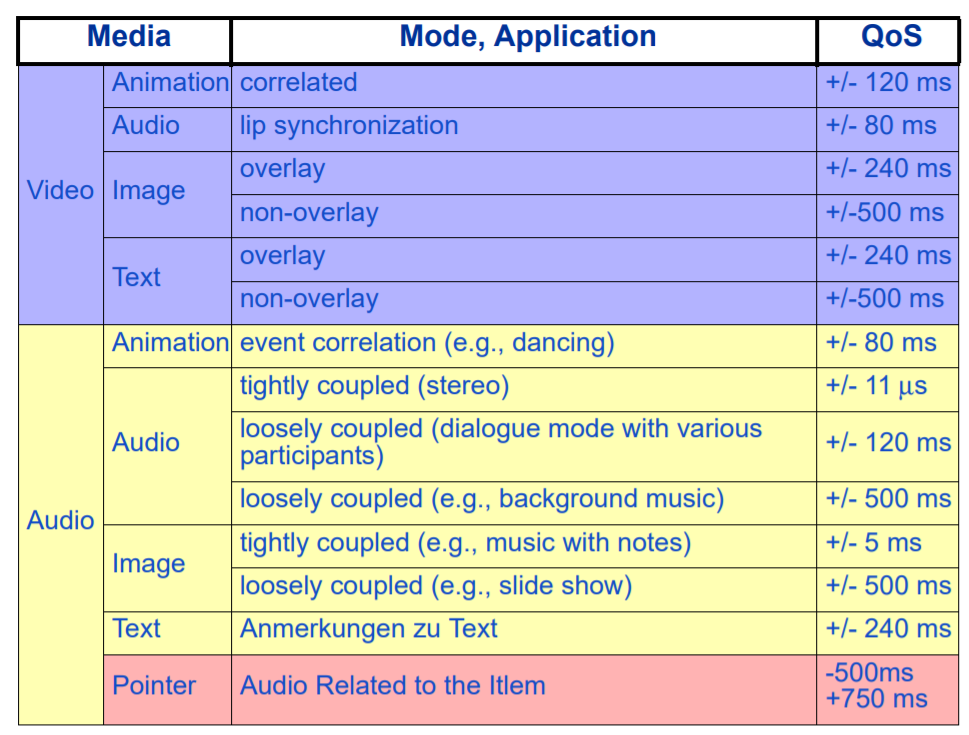UNIT 4
SYNCHRONIZATION
"Temporal" means "time". So, a temporal relationship between two entities is on their connection based on the time axis.
All of the entities on a horizontal time line are related to each other through the X, or temporal axis.
Time is defined as "the order in which events occur".




Synchronization specification
• It describes all temporal dependencies of the included objects and is part of the description in a multimedia object.
• It comprises of:
• Intra-object and Inter-object synchronization specifications
• Quality of service descriptions for both.
• It may also comprise:
• an alternative presentation forms and is implicitly defined in a live synchronization
• It must be explicitly described in a synthetical synchronization.
- It manages data traffic to reduce packet loss, latency and jitter on the network.
- It controls network resources by setting priorities for specific types of data on the network.
- It is used by organizations to meet the traffic requirements of sensitive applications, such as real-time voice and video, and to prevent the degradation of quality caused by packet loss, delay and jitter.
- Organizations can achieve QoS by using certain tools and techniques, such as jitter buffer and traffic shaping.
- QoS can also be included in the service-level agreement (SLA) with their network service provider to guarantee a certain level of performance.
QoS parameters
- Packet loss: It happens when network links become congested and routers and switches start dropping packets. When packets are dropped during real-time communication, such as a voice or video calls, these sessions can experience jitter and gaps in speech.
- Jitter: It is the result of network congestion, timing drift and route changes. Too much jitter can degrade the quality of voice and video communication.
- Latency: It is the time it takes a packet to travel from its source to its destination. Latency should be as close to zero as possible.
- Bandwidth: It is the capacity of a network communications link to transmit the maximum amount of data from one point to another in a given amount of time.
- Mean opinion score (MOS): It is a metric to rate voice quality that uses a five-point scale, with a five indicating the highest quality.
References:
- Multimedia : Computing, Communications & Applications by Ralf Steinmetz and Klara Nahrstedt, Pearson Ed.
2. Multimedia Systems Design by Prabhat K. Andleigh & Kiran Thakrar, PHI.
3. Principles of Multimedia by Parekh, TMH.